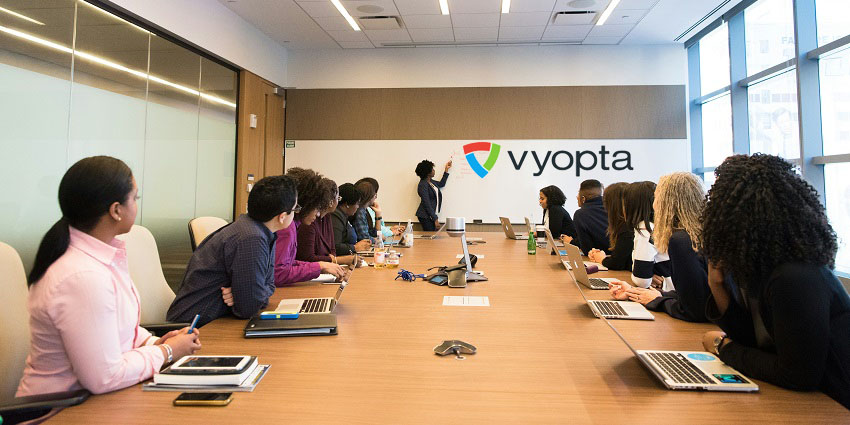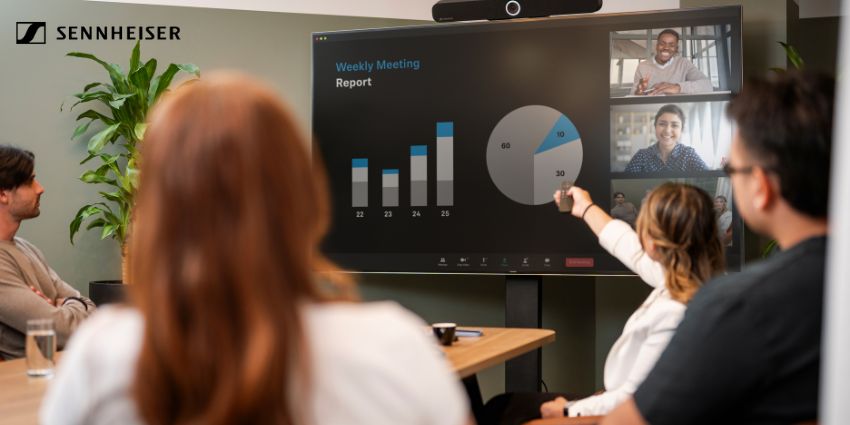Meetings have always been, and always will be, a major part of any business. Pre-pandemic, most meetings were held in dedicated rooms, occasionally equipped with large video screens to bring in a remote participant or two.
However, the unprecedented rise of remote work has caused meetings to transform as well, making virtual and hybrid meetings all the more common. With this change, company environments had to adapt, and new meeting cultures developed within organizations.
When meetings include employees working remotely and in-person, a new set of challenges emerges. How do companies keep employees engaged during meetings? How can we ensure every meeting is productive? And how can meetings feel not only productive but rewarding, whether they’re in-person or remote? Companies like Vyopta are taking on those questions by diving into the meeting data to help companies understand the trends and find ways to make collaboration work.
Why Meeting Culture Matters
Meeting culture is as important as corporate culture these days. Across the world, businesses host 100 million meetings every day, from ad-hoc virtual one-on-one sessions to massive company meetings and conferences. That adds up to over three trillion dollars spent worldwide for employees to sit in meetings, which is a major investment of time and money.
“Meetings need to be productive, and employees need to be engaged and feel empowered,” says Jonathan Sass, Vice President of Product and Marketing at Vyopta.
“That’s what’s driving our focus, and what we firmly believe that every executive, every leader, should care so much about.”
Creating a good meeting culture will help ensure that employees are active participants in every meeting. If anyone leaves a meeting feeling frustrated at the lack of progress, complaining “this could have been an email,” that’s not only a waste of time and money, it also negatively impacts morale and employee satisfaction.
Building a positive meeting culture means focusing on building employee engagement and empowerment while encouraging respectful and productive behavior. So how does one do that?
The Data Behind Meetings
To create a positive and effective meeting culture, organizations first need to understand their employees and their behavior during meetings, as well as how efficient their meeting tools are. This all comes down to data.
Meeting data provides valuable insights into engagement, collaboration, and the overall success of meetings. For instance, Vyopta’s internal research shows that about 7.5% of the time, employees in collaborative meetings of 3-5 participants either don’t choose to participate or don’t get a chance. In situations like this, organizations need to look at why it’s the case and understand what meeting culture challenges they’re facing, as well as see how they compare to their competitors.
Multiple factors need to be examined when looking at meeting data. These include:
- The technology you’re using and how reliable it is
- The overall quality of the meeting experience
- How users interact with each other
- How participants are using the tools at their disposal
- How the meeting spaces are configured (both for in-person and remote meetings)
Each of these impacts the meeting experience, as well as the overall meeting culture. As such, it’s important to be able to look into the data, gain new insights, and address specific issues along with the overall meeting culture to get the most value from every meeting.
Vyopta not only analyzes the meeting technology to identify quality and reliability issues but also provides user insights that can measure meeting equity and any disruptive practices. Additionally, Vyopta provides Space Insights that help organizations optimize their real estate and technology while understanding how to best use the spaces they have. All these factors impact the quality of a team’s collaboration, so having insights and data can help companies find ways to address any issues and build effective communication practices.
With all the time we spend in meetings, they should not be a source of discomfort or frustration. A healthy meeting culture helps build a strong company culture, but organizations need to understand each aspect of their meetings and meeting behavior to ensure employees are engaged and empowered.







